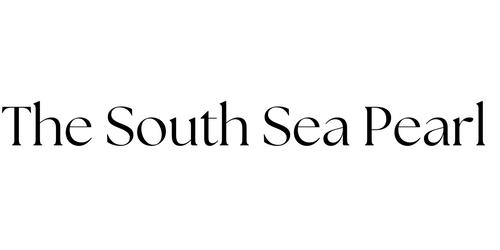The South Sea Pearl Blog / Golden Pearls
-
January 04, 2022South Sea Pearls with natural color and luster
-
November 24, 2020
The 60th Anniversary of The South Sea Pearl
by Dr. L. E. Cartier, first published in Facette 23 (February 2017)
The South Sea pearl oyster Pinctada maxima is known to produce white, cream and golden pearls. Such pearls are cultured mainly in Australia, Burma (Myanmar), Indonesia and the Philippines. Interestingly, 2016 marked the 60th anniversary of the first harvest of South Sea cultured pearls at the Kuri Bay farm (Australia), established by Tokuichi Kuribayashi of Nippo Pearls in 1954 (Müller, 1997). In the past few decades, South Sea cultured pearls have become some of the most desired and expensive cultured pearls in the market.
At present, golden South Sea cultured pearls are harvested mainly in Burma, the Philippines and Indonesia. Pearl farmers have targeted traits and oysters that can enable them to focus on specific nacre colours and thus pearl colours. In February 2016 Dr. Laurent Cartier had the opportunity of visiting Jewelmer pearl farms near Palawan Island in the Philippines and observing the different culturing techniques required to harvest golden South Sea pearls. The Jewelmer company was co-founded in 1979 by Jacques Branellec and Manuel Cojuangco with the aim of producing high-end golden South Sea cultured pearls.
Untreated high-quality golden South Sea cultured pearls from the Pinctada maxima oyster continue to be rare and highly sought after on the international market. This complexity (both ecologically and technically) associated with cultivating these pearls is a limiting factor in offering the market larger quantities of such high-quality cultured pearls. Treatments to attain and imitate such pearl colours and qualities will continue to exist, and SSEF is carrying out research on such treatments. As such, it is also very important to visit production sites and collect reliable samples for research. So it is important that both gemmological research and correct disclosure (see CIBJO Pearl Book) are followed. Another aspect of pearls that SSEF has been very active in is DNA fingerprinting of pearls, such as those from Pinctada maxima. In order to continue to brand and market South Sea cultured pearls from Pinctada maxima as such it is important to be able to distinguish these at a gemmological level, between them and pearls of similar colour from other species. The appreciation of golden South Sea cultured pearls will continue to rise as this relatively new resource in the jewellery industry gains wider attention and embodies a golden future.
For more info also see the article by Cartier & Krzemnicki (2016).
-
November 01, 2020
Colour in cultured pearls has many causes
Colour in cultured pearls has many causes, namely organic pigments and the water reservoir where the pearl shell is grown (sea water or freshwater) that has different manganese (Mn) concentrations with impact on nacre's colours. The mollusc species is, of course, one of the most important factors in this process, specially the donor specimen that provides the mantle tissue that is inserted in the gonads or mantle (depending on the culturing method) of a productive pearl mollusc for the formation of the cultured pearl sac. In Fiji, the local pearl oyster Pinctada margaritifera typica has mantle tissue cells that secrete unusual earthy coloured nacre (seen in the oysters' mother-of-pearl shell interior), and thus the colours of those cultured pearls are also expected to be coloured in such a way. Fiji has been producing natural color beaded cultured pearls, with ocasional non-bead "keshis", in relatively limited numbers since 1999 when Justin Hunter, a biologist and visionary, started his blue economy project with a pearl farm in his home land in Savusavu, Fiji, promoting sustainable luxury through marine cultured pearls. Photos © J. Hunter Pearls Fiji
#pearls #pearljewelry #luxury #gemology #jewelry -
December 13, 2019
Mother-of-pearl
Mother-of-pearl has been used since pre-historic times for adornment. In the modern ages, it was also artistically used in marquetry, gaming chips, devotional artefacts, as a bead for the cultured pearl industry but also in the button industry, being rather popular before plastics came into action. Mother-of-pearl is the smooth nacreous iridescent coating on the interior of some molluscs and Pinctada maxima, the Australian South Sea pearl oyster (also known as pearl button oyster and mother-of-pearl oyster) has been a rather important source not only for the quality of the nacre but also because the wild shells have notorious sizes averaging between 20 and 30 cm, up to 40 cm in exceptional cases. Although local shells in the north have been collected since pre-history, the pearling industry only started in Australia in 1868, especially in Queensland. In the photos, a pearl shell sorter in Thursday Island, Queensland, Australia. Photo Frank Hurley © National Library of Australia ; and a series of Pinctada maxima shells being manufactured as buttons, from the Museum of Applied Arts and Sciences collection (B&W picture from 1933 at the The Pearlbutton Manufacturing Co. Ltd in Sydney, New South Wales, Australia).
Source: Rui Galopim de Carvalho (Portugal Gemas Academy)
- 1
- 2




